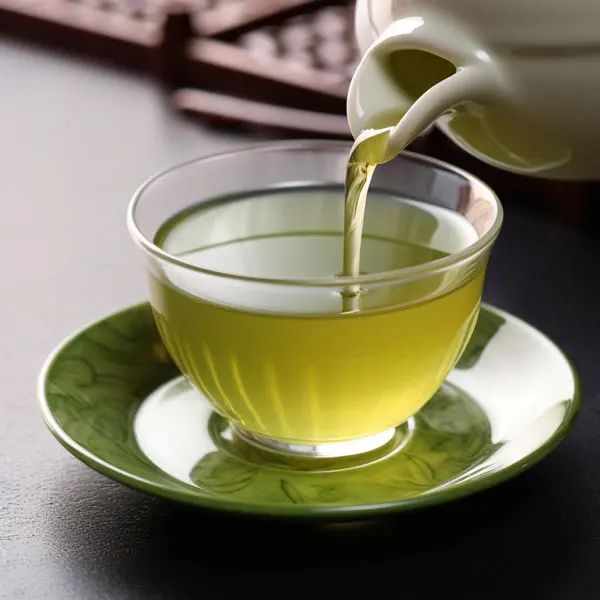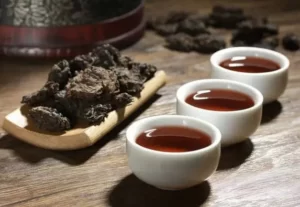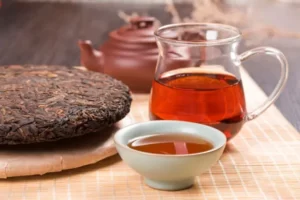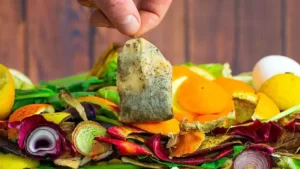Introduction
Ah, the traditional chinese teacups – an exquisite and subtle vessel that plays an essential role in the traditional Chinese tea ceremony. The journey from the tea leaf to the tea infusion is a delicate process, and every step is steeped in the “Tao”, with the traditional Chinese tea cup sitting at the heart of this sacred ceremony. But is the shape of a tea cup just for aesthetics, or does it actually influence the taste of the tea? Prepare to embark on a journey that explores the intricate relationship between the cup’s design and the tea it holds.
The thickness of the traditional chinese teacups
Ever noticed how the scent of a freshly brewed cup of tea changes with temperature? That’s where the thickness of the tea cup comes into play. Picture the aroma as floating dust – the lighter particles rise higher, and the heavier ones fall and settle at the bottom. Just like the notes of a perfume, some fragrances are released immediately, while others linger and are sensed later.
The traditional chinese teacups with thin body heat up quickly and lose heat just as fast, causing the aroma to disperse rapidly. By the time you take your first sip, the fragrance might have evaporated, making these cups suitable for fresh, lightly scented teas. On the other hand, cups with thick body retain heat longer, suitable for vintage, heavily fermented teas. The potent aroma of such teas lingers in the insulating confines of the thick-body cup, enriching the drinking experience.
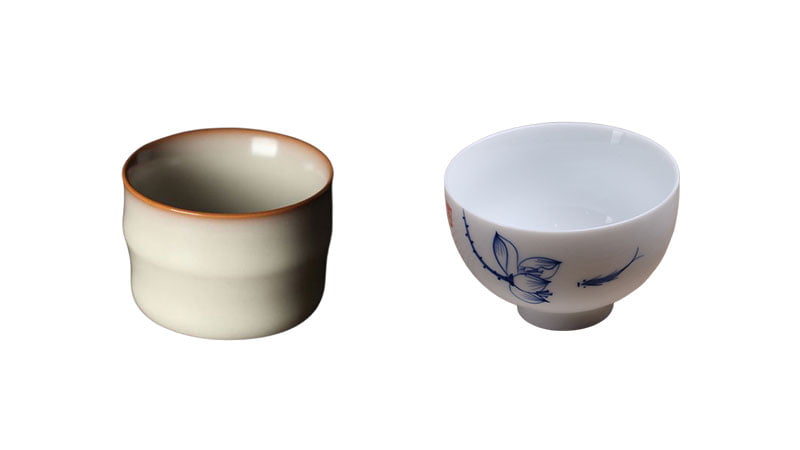
Cup body depth
The depth of the cup plays a vital role in the aroma and, consequently, the flavor of your tea. With over 80% of the sensation of taste coming from our sense of smell, it’s crucial to consider the depth of your traditional chinese teacups. A deeper cup retains the aroma better, leading to a richer, more lasting taste. Shallow cups, however, allow the aroma to escape more quickly, reducing the intensity of the flavor.
The streamline of the traditional chinese teacups
The shape of the tea cup’s rim, which refers to the curvature and size of the opening of the cup, determines where the tea first contacts your mouth and how long it stays there. We mainly find three types of cup designs in traditional Chinese tea culture – large-mouthed, straight-rimmed, and closed-mouthed.
Large-mouthed cups have a wider opening in relation to their height, providing a full-bodied feel as the tea enters your mouth. These cups allow you to experience the full breadth of the tea’s flavor but offer the least concentration of aroma and taste.
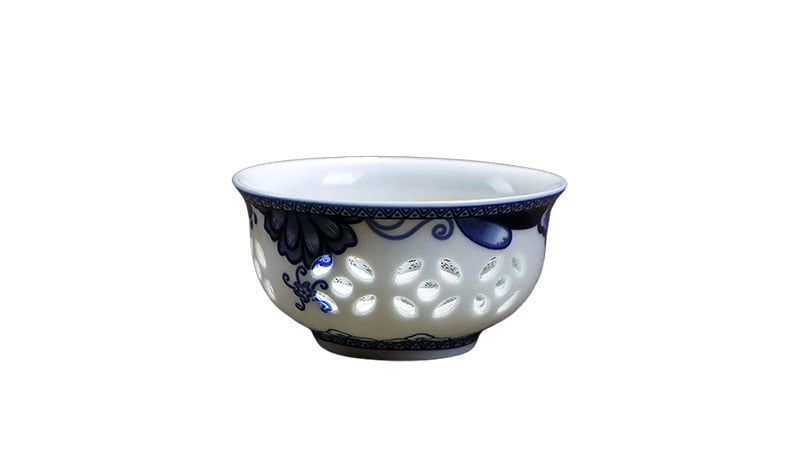
Straight-rimmed cups, on the other hand, are best for strong, aromatic teas. Their tall and narrow structure focuses the aroma, enriching the tea’s flavor.
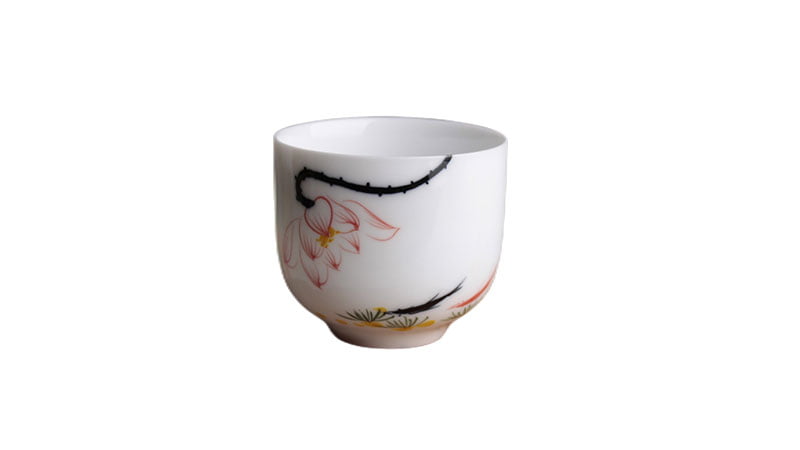
Lastly, the closed-mouth cups, with their slightly bulging bodies and inward-facing rims, provide a balanced aroma and taste. However, the smaller opening means that the tea’s flow is somewhat restricted. This calls for a more mindful sip, allowing you to savor the tea, but also might require a more pronounced tilt of your head when sipping. This slight inconvenience can be outweighed by the rich tea experience the cup provides.

The color of the traditional chinese teacups
Believe it or not, the color of your tea cup can influence how you perceive the taste of your tea! A study from Australia found that participants perceived coffee to taste differently based on the color of the cup. White cups made coffee seem “stronger”, clear cups “lighter”, and blue cups “moderate”. The mind connects certain colors with specific sensations, altering your perception of taste.
In Chinese teacups, you’ll find a plethora of glaze colors – white, cyan, blue, red, yellow, and many more, each with their own character. Their colors and exquisite designs can enrich your tea tasting experience, altering your perception of the tea’s flavor.

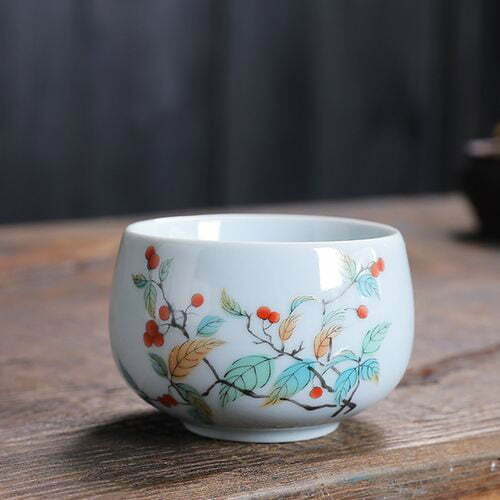
The best combination of teacup and tea
Follow a principle: if you want to drink tea that highlights the aroma, it is suitable for a tall cup body and a narrow cup mouth. If you drink tea that is similar to Pu ‘er, which does not care about the aroma but the smooth taste, it is more suitable for large mouths and low cups.
Large-mouthed cups:
Phoenix single fir, Wuyi rock tea, Tie Guanyin, green tea, white tea
Straight-rimmed cups:
Black tea, white tea, oolong tea
closed-mouth cups:
Old white tea, black tea,Pu ‘er tea
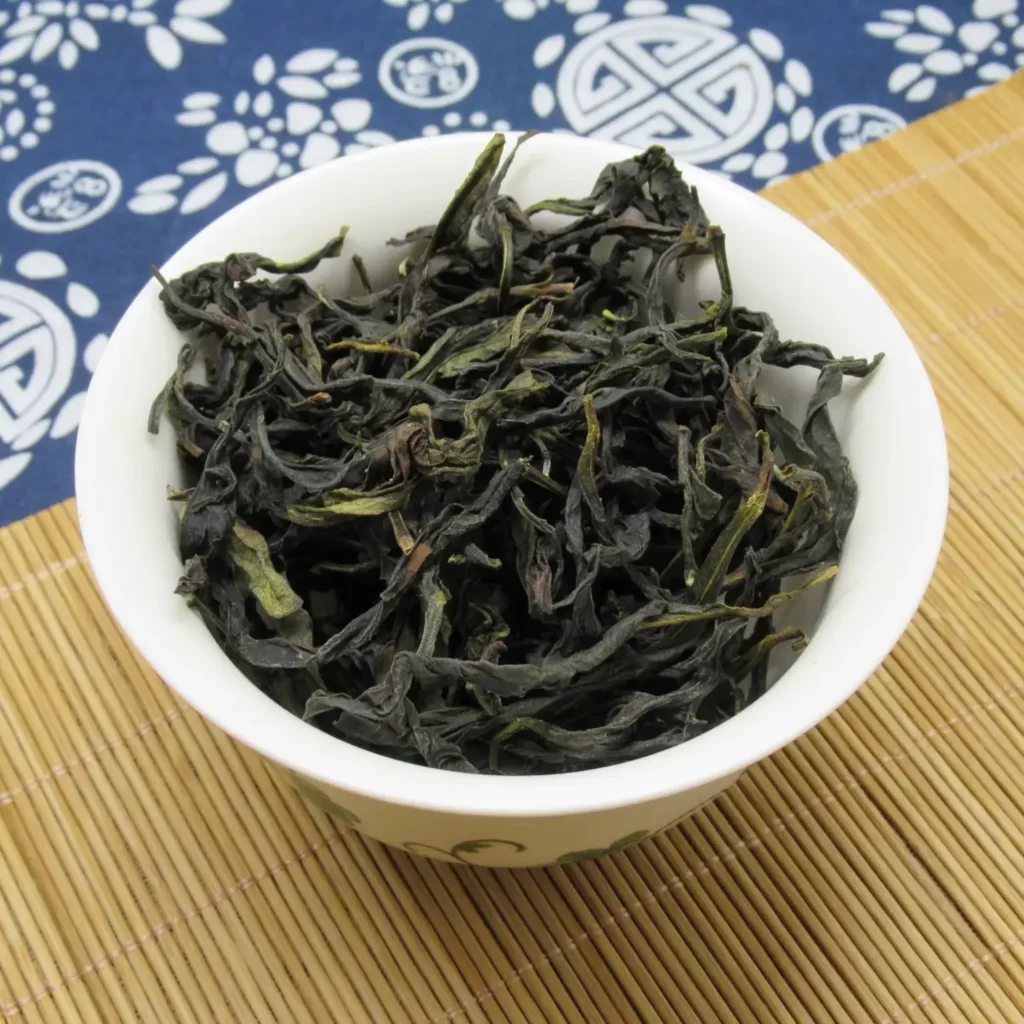

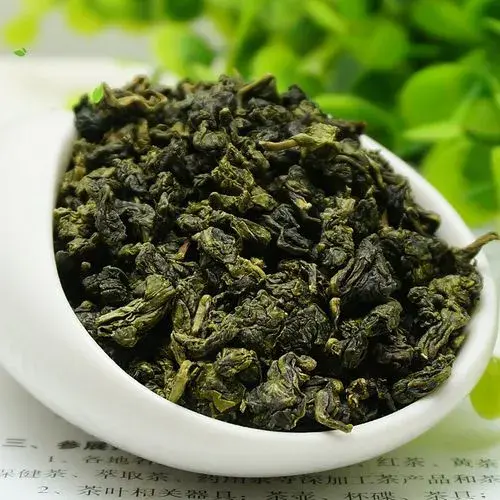
Conclusion
Tea drinking is a deeply personal experience, and your perception of the tea’s flavor and aroma matters most. So, the next time you reach for traditional Chinese teacups, remember the influence of the depth, thickness, and color of the cup. Experiment with different cups and teas, and take a moment to reflect on how the tea tastes to you. Every detail contributes to the overall tea-drinking experience, subtly shaping the sensations you experience and the memories you create.
FAQ
Does the material of the tea cup also affect the flavor?
Yes, the material of the tea cup, like porcelain, clay, or glass, can indeed influence the taste of the tea due to their heat retention properties and the way they interact with the tea.
How should I choose my traditional chinese teacups?
Consider the type of tea you usually drink, the temperature you prefer it at, and how you like to enjoy your tea. A thin-rimmed, deep cup might suit a leisurely tea-drinker enjoying a light, aromatic tea, while a thick-rimmed, shallow cup might suit someone who enjoys sipping on a robust, fermented tea.
Can I use the same cup for all types of teas?
While you certainly can, using different cups for different teas will allow you to fully appreciate the unique flavors and aromas of each tea. Experiment and discover the nuances each cup brings to your tea experience!
